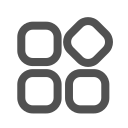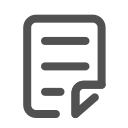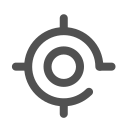Develop keyword frameworks for Digital Asset Management.
Improve the findability of your assets with a tactical keyword framework in your DAM system
By now, you are either working with Comrads' DAM system or about to implement one. That's an important step toward structure and brand consistency. But it doesn't stop there. In fact, now it's really just beginning.
Without clever search logic, even the best DAM becomes a digital grab bag. Recognizable? Files that seem unfindable, colleagues asking for that one logo for the hundredth time, and tags that are out of whack.
High time to hold your keyword framework up to the light. Because only when your keywords are structured will your DAM really work for you.
Why keywords are indispensable in DAM
Your Digital Asset Management (DAM) system is more than a repository. It is the foundation of your daily marketing and communications work. Keywords provide structure, speed and relevance. They make the difference between "searching" and "finding. Especially if multiple teams, agencies or (international) offices are working with the same system, you want everyone to speak the same language.
From tags to tactics
Many DAM users tag assets by feel or convenience. Think "campaign summer," "social" or "print. That seems logical, but the risk of overlap and inconsistency is high. A tactical keyword framework prevents that. Think of it as a metadata strategy: you define in advance which terms you use, in what context and for whom. In this way, you create an unambiguous structure that is scalable and grows with your organization.
A smart keyword framework has three layers:
Categorical - What is the asset type (e.g., corporate identity, video, manual, mood image, etc. )?
Contextual - What is it for? (e.g. product launch, 2025 campaign, social media, etc.)
Targeted - Who is it relevant to (e.g., sales, retail, HR, partners, etc.)?
Already have a strong foundation? Then this is the time for recalibration
"But we already established a metadata structure together during the workshops, right?"
That's right, because during the implementation of our DAM applications, we always set up a customer-specific metadata structure together. But organizations, teams, processes and content strategies change. What once made sense may now be outdated. That's why we advise our customers to regularly do a metadata check. This keeps your DAM effective, clear and relevant.
Ai as a smart assistant
Are you already working with auto-tagging within Comrads DAM? Using AI, common visual features can be recognized and tagged automatically. This saves time and increases consistency. Not activated AI tagging yet? We would be happy to show you what it delivers.
In addition, AI also helps you gain insight into your current keyword usage. Which tags are often used? Where is there overlap or inconsistency? And how does this connect to your communication structure? On the basis of data, you discover where the bottlenecks and opportunities lie in your existing framework.
Check your metadata structure
Is your keyword framework still in line with how you work? Schedule a check-in with your regular contact.
Activate ai auto-tagging?
Discover how AI automatically adds tags to your imagery and simplifies your work.
In summary, keep steering for findability
You don't have to be stuck to one structure. On the contrary: keyword frameworks are flexible and may - indeed, must - move with your organization. Comrads is happy to help you with that. Whether it concerns small optimizations or a larger restructuring, we think along with you and ensure that your DAM is completely future-proof again.











